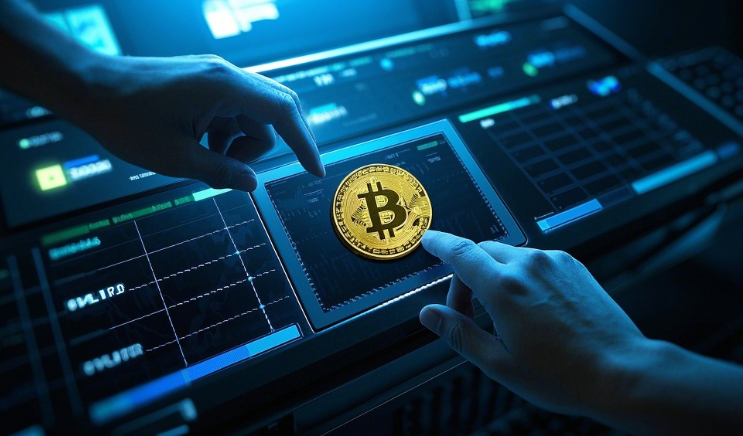Imagine a financial world without banks or intermediaries, entirely driven by code—this isn’t science fiction but a rapidly unfolding reality. Over the past few years, decentralized finance (DeFi) has evolved from a niche experiment into a powerful force reshaping traditional finance. Today, the total value locked (TVL) in DeFi exceeds $300 billion, and at the heart of this transformation are DeFi exchanges. No longer just platforms for token swaps, they are becoming the gateways to Web3, unlocking unprecedented wealth-building opportunities for individuals, developers, and institutional investors alike.
Part 1: The Evolution of DeFi Exchanges
1. From Order Books to Liquidity Pools: A Trading Revolution
If you’ve used centralized exchanges (CEXs) like Binance or Coinbase, you’re familiar with order books. But in DeFi, this model has been completely reimagined. Platforms like Uniswap pioneered automated market makers (AMMs), replacing order books with liquidity pools. Anyone can deposit tokens into these pools to become a "liquidity provider," while traders interact directly with the pooled funds. This approach not only enhances transparency but also allows everyday users to earn trading fees through liquidity mining.
For instance, in 2023, a rising DeFi exchange integrated cross-chain aggregation, hitting $1 billion in daily trading volume. Its success lay in combining the efficiency of CEXs with DeFi’s open-access ethos.
2. From Trading Hubs to Ecosystem Pillars
Modern DeFi exchanges have outgrown their role as mere trading venues. They are now infrastructure hubs for Web3. Curve specializes in stablecoin swaps, while Balancer enables customizable liquidity pools. These platforms seamlessly integrate lending, staking, derivatives, and even DAO governance.

With cross-chain interoperability (e.g., Cosmos IBC, Polkadot XCMP), users can manage multi-chain assets from a single interface. Tomorrow’s DeFi exchanges may well become the "homepages" of Web3, much like search engines are for the internet today.
Part 2: How DeFi Exchanges Are Reshaping Web3
1. Oracles: Bridging On-Chain and Real-World Data
DeFi relies on real-world data—from crypto prices to weather forecasts—delivered by oracles like Chainlink. These decentralized networks ensure data accuracy and tamper resistance.
Innovatively, users can now stake tokens to validate data and earn rewards. For example, one exchange’s "dynamic leverage contracts" adjust risk parameters in real time based on oracle inputs, putting control back in users’ hands.
2. DAO Governance: Users as Stakeholders
Unlike traditional finance, where exchanges are centrally controlled, DeFi empowers communities. Take dYdX: protocol upgrades, fee adjustments, and token listings are voted on by token holders. If you own governance tokens, you’re not just a user—you’re a co-owner of the ecosystem.
In 2024, DAO-managed DeFi protocols accounted for over 40% of the sector’s market cap, outpacing traditional corporate innovation.
3. NFT Financialization: From Art to Liquid Assets
NFTs, once static collectibles, are now tradable financial instruments. Fractionalization protocols split high-value NFTs into ERC-20 tokens, while platforms like Sudoswap enable NFT trading via AMMs. This "NFT-Fi" movement is redefining asset liquidity.
Part 3: How to Capitalize on DeFi’s Opportunities
1. Liquidity Mining: Low-Risk Passive Income
By depositing tokens into liquidity pools (e.g., ETH/USDC), users earn fees and rewards (15–30% APY). Beware of impermanent loss, but stablecoin pairs or hedging tools (e.g., options) can mitigate risks.

2. Alpha Hunting: Early-Stage Gold Rushes
New DeFi projects emerge daily. Tools like Nansen or DeBank track "smart money" to spot gems early. Some turned 1 ETH into 50x gains during meme coin presales—high-risk, high-reward plays.
3. Derivatives: High-Stakes Leverage
Decentralized perpetual platforms (e.g., dYdX, GMX) offer 100x leverage without KYC. But tread carefully: leverage magnifies gains and losses. Always use stop-losses and monitor liquidation risks.
Part 4: Challenges and the Road Ahead
1. Security vs. Accessibility
Despite "code is law" ideals, hacks persist (e.g., a $200M bridge exploit in 2024). Future exchanges must balance decentralization with user safety, adopting formal verification and insurance (e.g., Nexus Mutual).

2. Regulation: The Inevitable Crossroads
Governments are grappling with DeFi. The SEC labels some governance tokens as securities, while the EU’s MiCA enforces AML rules. Compliance may curb DeFi’s wildness but is key to mainstream adoption.
3. Metaverse Finance: Web3’s Final Frontier
Tomorrow’s DeFi exchanges could merge with the metaverse: trade real-world stocks via DID logins, collateralize NFTs for virtual land loans, or vote in DAOs to set digital city taxes—all within a decade.
Are You Ready?
DeFi exchanges aren’t just disrupting finance; they’re redefining it. Whether you’re a yield farmer, alpha hunter, or curious observer, this ecosystem has a place for you. As Vitalik Buterin said, "DeFi’s goal isn’t to destroy banks but to destroy the concept of banks." In this revolution, the biggest risk isn’t volatility—it’s staying on the sidelines.
(Data and examples are sourced from public materials; not financial advice.)
















No comments yet